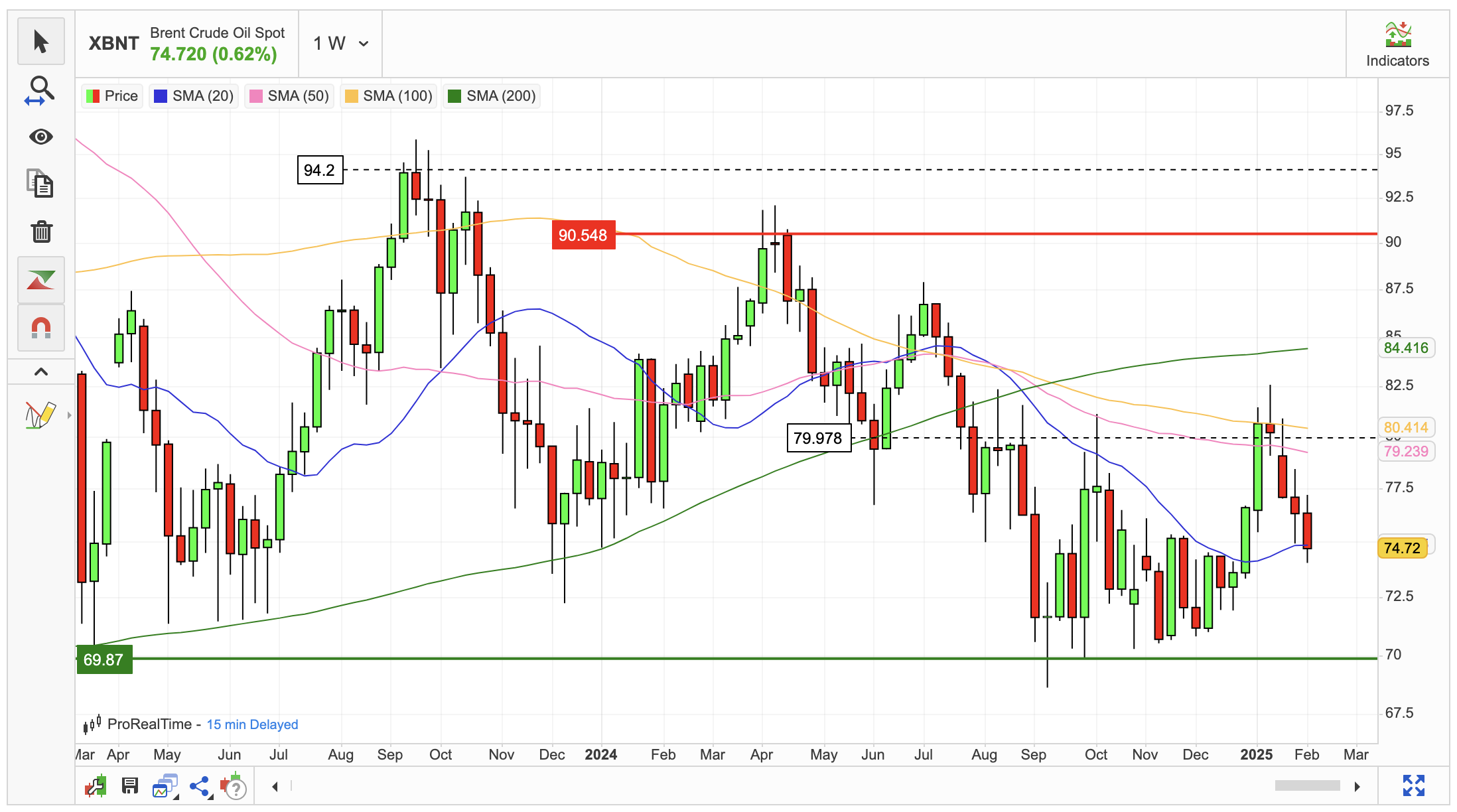Oil Slips For Fourth Consecutive Week
- This topic has 0 replies, 1 voice, and was last updated 2 months ago by .
-
Topic
-
WTI/crude oil futures hovered around $71/$74.8 per barrel on Friday, poised for a fourth consecutive weekly decline.
This downward trend comes in the wake of President Trump’s renewed commitment to increase US oil production, aiming to drive prices lower.
The President’s declaration has added pressure to an already oversupplied market, following a significant and unexpected increase in US oil inventories—the largest in nearly a year.
However, several factors are working to limit further price drops.
Early in the week, the US intensified sanctions on Iran, potentially constraining its oil exports.
Additionally, Saudi Aramco implemented substantial price hikes for March crude deliveries, responding to growing demand from Asian powerhouses China and India, as well as supply disruptions from Russia.
The Saudi oil giant raised its official selling price for flagship Arab Light crude by $2.40 to $3.90 per barrel above the Oman/Dubai benchmark average for Asian buyers, marking the most significant increase since August 2022.
Geopolitical tensions continue to influence the oil market, with US-China trade frictions persisting.
Beijing has imposed retaliatory tariffs on American oil, liquefied natural gas (LNG), and coal in response to recent US measures.
However, the impact of these tariffs is expected to be limited, given China’s relatively modest imports of US energy products.
This complex market environment presents several opportunities for traders:
Volatility trading: The conflicting forces affecting oil prices create opportunities for traders to capitalise on short-term price fluctuations using options or futures contracts.
Spread trading: Traders could exploit the price differentials between various crude oil grades or between WTI and Brent benchmarks.
Geopolitical event trading: As sanctions and trade tensions continue to impact the market, traders can position themselves based on anticipated policy shifts or diplomatic developments.
Energy sector stocks: The fluctuations in oil prices may create opportunities in energy company stocks, both for long and short positions.
Currency trading: Oil price movements often affect currencies of major oil-producing countries, offering potential forex trading opportunities.
Long-term positioning: Traders with a longer-term outlook might consider building positions based on their projections of future supply-demand dynamics in the oil market.
However, traders should remain cautious and maintain strict risk management practices, given the market’s current volatility and the complex interplay of geopolitical and economic factors influencing oil prices.

Data: Trading Economics